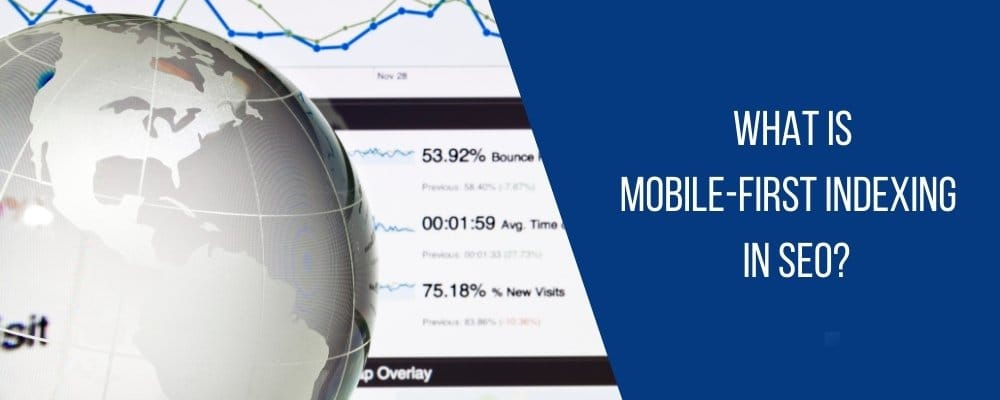In today’s digital age, mobile usage has surpassed desktop browsing, prompting search engines like Google to prioritize mobile-friendly websites. One of the most significant changes in this shift is the introduction of mobile-first indexing. But what exactly does this mean for your website’s SEO, and how can you ensure you’re keeping up with these updates?

Understanding Mobile-First Indexing
Mobile-first indexing is a process where Google primarily uses the mobile version of a website for indexing and ranking. Traditionally, Google’s indexing system prioritized desktop versions. However, with the rise in mobile usage, Google now views the mobile version as the primary source for search results. This change is critical for SEO because it means that if your mobile site isn’t optimized, your rankings could suffer, even if your desktop version is flawless.
Why Mobile Indexing Matters
The shift towards mobile-first indexing reflects the evolving behavior of users. With smartphones being the go-to device for browsing, the mobile experience is now the first interaction many users have with your site. Websites that offer a seamless mobile experience are likely to rank higher on search engine results pages (SERPs), which can lead to increased visibility, traffic, and conversions.
Additionally, a poor mobile experience could lead to higher bounce rates, negatively impacting your overall ranking. Therefore, optimizing for mobile isn’t just an option; it’s essential for maintaining and improving your SEO performance.
Key Factors in Mobile Optimization
To succeed with mobile-first indexing, it’s crucial to focus on certain elements of your mobile site. These include:
- Responsive Design
A responsive design ensures that your website automatically adjusts to fit any screen size. Whether a user is viewing your site on a smartphone, tablet, or desktop, a responsive design guarantees a consistent and user-friendly experience across devices. - Page Load Speed
Mobile users tend to be less patient with page load times. Optimizing images, reducing unnecessary scripts, and utilizing browser caching can significantly improve page speed, directly influencing your rankings. - Mobile Usability
Google evaluates a mobile site’s usability based on factors such as touch-friendly buttons, readable text, and a clutter-free interface. Ensuring your website is easy to navigate on smaller screens will improve user experience and help your rankings. - Content Parity
Make sure the content on your mobile version mirrors the desktop version. If your mobile site is missing critical content, images, or links, it may negatively affect your ranking. Google now primarily considers mobile content when indexing. - Structured Data
Schema markup and other structured data formats should be consistent across both mobile and desktop versions. This ensures that search engines can properly understand your content and display rich snippets, further improving visibility in search results.
How Does Mobile-First Indexing Affect Your SEO Strategy?
This method of indexing forces website owners and marketers to prioritize mobile optimization in their overall SEO strategy. As Google predominantly indexes the mobile version of your site, having a mobile-friendly design, fast load times, and high-quality content is more important than ever.
Here are some areas to focus on:
- Technical SEO: Ensure that your mobile version is crawlable and accessible to search engines. Use tools like Google Search Console to identify and fix any issues with mobile usability.
- Mobile-Friendly Testing: Use Google’s mobile-friendly test to evaluate how well your site performs on mobile devices. This tool will provide insights into potential issues like slow page speed or unresponsive design elements.
- Content Optimization: As Google prioritizes the mobile version, ensure your content is optimized for mobile readers. Keep sentences short, use bullet points, and format text for easy readability on small screens.
- Linking Strategy: Internal and external links should work just as well on the mobile version as they do on the desktop. Broken or inaccessible links on the mobile site can hurt SEO performance.
Common Challenges
Despite the clear benefits, there are a few challenges that website owners may face when adapting to mobile indexing:
- Complex Web Designs: Websites that use intricate designs and heavy elements may struggle to load efficiently on mobile devices. In such cases, simplifying the design and compressing assets becomes necessary.
- Inconsistent Content: Some websites choose to display less content on mobile versions, which can cause a drop in rankings if important information is missing. Always ensure your mobile site offers a complete experience, similar to the desktop version.
- Separate URLs for Mobile: If you are using separate URLs for mobile (m-dot websites), it can complicate the indexing process and potentially cause issues with duplicate content. Switching to a responsive design or dynamic serving is often a better solution.
The Role of AMP (Accelerated Mobile Pages)
Accelerated Mobile Pages (AMP) is another way to enhance your mobile site’s performance. AMP pages load almost instantly on mobile devices, providing a better user experience and potentially improving rankings. While AMP is not mandatory for mobile-first indexing, it can be a beneficial addition, especially for content-heavy sites like news outlets or blogs.
Conclusion
Mobile-first indexing is not just a trend; it’s the future of SEO. As more users shift to mobile browsing, search engines like Google are adapting to ensure the best possible user experience. By focusing on mobile optimization, improving page speed, and ensuring content parity across all devices, you can stay ahead in the ever-evolving SEO landscape.
Frequently Asked Questions (FAQ)
1. Does mobile-first indexing affect desktop ranking?
Yes, it can affect desktop rankings. Since Google now prioritizes the mobile version for both mobile and desktop searches, an unoptimized mobile site could lead to lower rankings across the board.
2. How can I check if my site is mobile-first indexed?
You can check your website’s status by visiting Google Search Console. If your site has been switched, Google will notify you within the console.
3. What happens if my mobile site is slow?
A slow mobile site can negatively impact both user experience and rankings. Google uses page speed as a ranking factor, so optimizing your mobile site for faster load times is critical for success.
4. Should I focus solely on mobile SEO now?
While mobile SEO is crucial, desktop SEO still matters, especially for users who primarily use desktops. Ensure that both your mobile and desktop versions offer a seamless experience.
5. Do all websites need to switch to mobile-first indexing?
Yes, Google has already implemented it for most websites. Even if your audience is primarily desktop-based, optimizing for mobile is essential as search engines will still prioritize the mobile version.


